Efficient RIs enable the greatest discoveries in science and technology, while also attracting researchers from around the world and building bridges between research communities. They allow researchers to be trained and facilitate innovation and knowledge-sharing.
This page contains a selection of important Estonian research infrastructure units and presents Estonian participation in ESFRI Roadmap objects.
Core Infrastructures belong to the R&D institutions and are necessary when it comes to carrying out the research themes that have been established in the public interest. These can also be used by other parties pursuant to the conditions and procedures that have been established by the R&D institution. Core Infrastructures bring with them a high level of scientific equipment or technology and highly skilled manpower. Their main task is to serve the research community and entrepreneurship through the means of providing expertise and analytical opportunities in various areas. Currently there are eight Core Infrastructures, which are also part of the Estonian Research Infrastructures Roadmap.
Research infrastructures (RIs) are facilities, resources, and services which are used by the scientific community to conduct research and foster innovation. They include major scientific equipment, resources such as collections, archives, or scientific data, e-infrastructures such as data and computing systems, and communications networks. RIs can be single-sited (a single resource at a single location), distributed (a network of distributed resources), or virtual (the service is provided electronically).
Click on the field of science and discover the great infrastructure units:
Estonia is a member of several international research infrastructures (ESFRI roadmap objects and others). The Estonian Research Council participates in accession preparations, representing Estonia in accession negotiations and with governing bodies for international research infrastructures after having joining them.

Centre For Estonian Language Resources (CELR)
RI description
The goal of the Centre for Estonian Language Resources (CELR) is to create and manage an infrastructure which will support the making of Estonian language digital resources (dictionaries, corpora – both text and speech, and various language databases) and language technology tools (software) available to everyone who is working with digital language materials.
The CELR coordinates and organises the documentation and archiving of the resources as well as developing language technology standards and drawing up the necessary legal contracts and licences for different types of users (public, academic, commercial, etc). In addition to collecting language resources, a system will be launched for introducing the resources to potential users, and also for informing and educating them.
The main users of the CELR are researchers from Estonian R&D institutions, and social sciences and humanities researchers from all over the world via the CLARIN ERIC network of similar centres in Europe. Those partners who belong to the CELR consortium are the University of Tartu, the Tallinn University of Technology, the Institute of the Estonian Language, and the Estonian Literary Museum.
RI research services
The central data register and repository service for language resources;
A metadata portal, data category registration service, schema registration services for language resources; A knowledge and expertise service for RI users; user support; central IT services such as hosting, archiving, depositing, and the preservation of the Estonian language and other linguistic data, user access and authorisation for services that are provided by the national identity federation.
Equipment at the RI
Central servers for hosting, archiving and depositing language resources and tools; servers for producing and testing research models.
A live server (Supermicro 6037R) for hosting all live applications. Registering language resources and providing a repository of language resources.
A web-based user environment for using language resources and tools for research and development purposes.
A registry for and repository of language resources; covering project management, virtualisation, and version control software.
Contact
Hosting organisation: University of Tartu
http://www.keeleressursid.ee/en
Liivi 2 / 50409 Tartu
kadri.vider@ut.ee
Estonian E-Repository And The Conservation Of Collections (E-Varamu)
RI description
The ‘E-varamu’ portal is a semantics-based search engine which provides access to related information from all of the databases in Estonian ‘memory institutions’, including libraries, archives, museum collections and other sources of information which are relevant to the research community. The portal uses extensive cross-referencing methods between several databases, connecting the search items with (science) literature catalogues and allowing queries and user-preferences to be saved. In addition to the portal, the infrastructure features a mass deacidification centre for the conservation of written literature. The infrastructure creates the capability to digitise the holdings of memory institutions and to make the data more accessible for end-users through the portal.
RI research services
Mass deacidification
The mass deacidification of library and archival materials which are currently stored on acidic paper.
Digitising printed materials.
Digitising cultural heritage (books, manuscripts, audio-visual materials, etc).
Database storage and data handling.
Providing scientific databases for storing and handling data.
Software development.
Developing thin-client access portals.
Equipment at the RI
Automatic book scanner
A book scanner with automatic page turner for documents (books, magazines, and bound newspapers), any size up to A1 format can be handled.
A disk array.
A disk storage system for digital archives.
A mass-deacidification system.
Treatment chamber(s); paper material preconditioning chamber(s) (for tasks such as drying); deacidificant fluid collector(s); and deacidification and reagent/carrier fluid storage tank(s).
Hardware and software for digitising audio materials (on magnetic tape) and visual materials (VHS video recordings and photos).
Contact
Hosting organisation: University of Tartu
http://e-varamu.tlulib.ee/E-varamu/E-varamu.html
Ülikooli 18 / 50090 Tartu
liisi.lembinen@ut.ee

Estonian Centre For Genomics (ECG)
RI description
The Estonian Centre for Genomics (ECG) combines a population-based biobank and an infrastructure for genomics studies. The ECG is a genomics hub for the Biobanking and Biomolecular Resources Research Infrastructure (BBMRI ERIC).
Sequencing, genotyping and gene expression analysis, cytogenetics , cancer research studies, metagenomics, etc – EGC Core Facility offers a wide range of services to study various species with the latest technology from Illumina.

RI research services
The Estonian Genome Centre Core Facility is dedicated to providing genotyping and sequencing services to researchers, clinicians, and others using state-of-the-art technology. In 2006, the ECG started with an Illumina BeadArray platform. Today, the core facility is equipped with Illumina’s HiSeq2500 and MiSeq for whole genome and targeted sequencing projects, and a HiScanSQ for genome-wide genotyping, methylation, and expression analyses. From the beginning of 2012, the core facility has been certified by Illumina as Illumina Certified Service Providers (CSPro) for genotyping, gene expression, and sequencing.
Access to Estonian Biobank sources
Providing access to Biobank samples, donor health details, and phenotype and genotype data, including genealogy data.

Equipment at the RI
IT infrastructure
A full software set with several modules with the specific task of collecting additional data from gene donors and to provide data for scientists in a user-friendly way.


Contact
Hosting organisation: Estonian Biocentre / University of Tartu
http://www.geenivaramu.ee/en
Riia mnt 23b, Tartu
mait@ebc.ee
National Centre For Translational And Clinical Research (CTM)
RI description
The general objective of the CTM is to advance medical research in Estonia by improving its quality and implementation. The CTM’s mission is to transform scientific discoveries into innovative and high-impact medicines, diagnostics, and medical equipment through the means of collaboration between academia, industrial, and governmental partners. CTM is also the partner in the European Infrastructure for Translational Medicine (EATRIS ERIC).

CTM offers infrastructure for preclinical and clinical research Source: National Centre For Translational And Clinical Research (CTM)
RI research services
Animal models, diagnostics, translational research.
Genomics and metabolomics.
Biomarker discovery, disease collections, and clinical research.
Consulting services: study design, site selection, initiation, project management, study coordination, EC and regulatory approvals, and the financial aspects of the clinical project.
GCP training, and educational courses related to study design and methodology.
Biobanking.
Equipment at the RI
Small animal MRI, animal house, BSL3 animal laboratory, plus rodent phenotyping.
A transgenic technology laboratory.
Small animal bioluminescence and fluorescence live imagining.
The Laboratory of Toxicology (GLP).
A next generation sequencer, Ion Torrent, & Proton Torrent.
A histology and pathology laboratory.
Disease collections and databasing.
Confocal microscopy.
Mass spectrometry.
High-performance liquid chromatography.
Equipment for the functional assessment of the musculoskeletal system.
Contact
Hosting organisation: University of Tartu
http://www.ctm.ee
Ravila 19 / 50411 Tartu
Katrin Kaarna katrin.kaarna@ut.ee
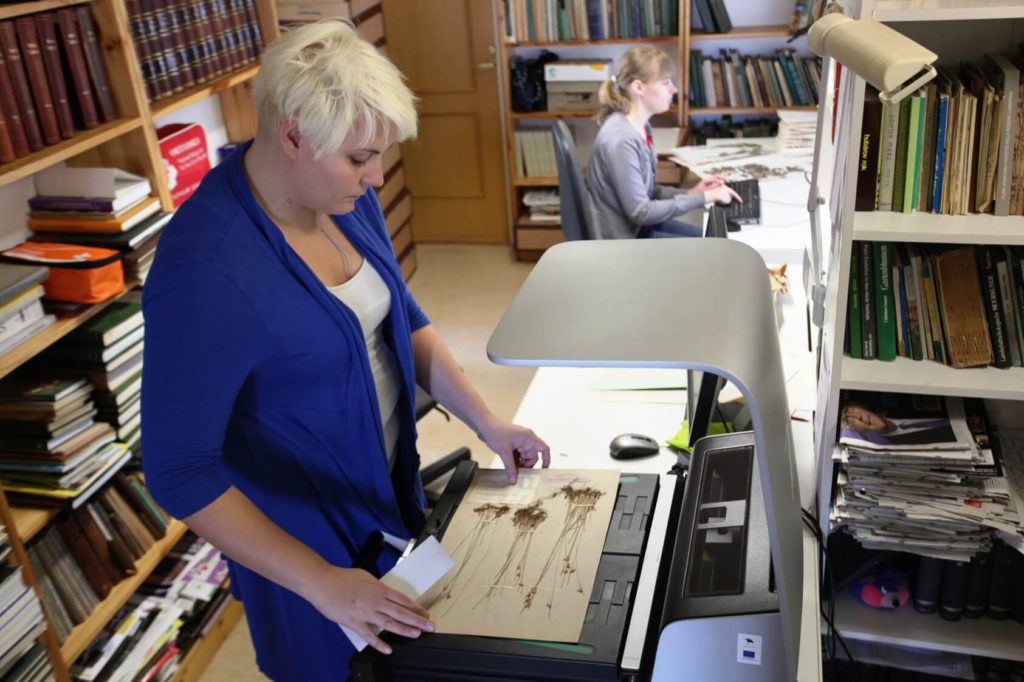
Natural History Archives And Information Network (NATARC)
RI description
The Natural History Archives and Information Network (NATARC) develops services which are related to the hosting and computing of scientific repositories and data archives. Services are addressed at scientists around the whole world, but they are also provided for teachers, students, nature conservationists, government officials, organisations, and others.
NATARC is developing the central infrastructure for biorepositories and georepositories, with that infrastructure consisting of repositories that meet international standards and with facilities that are required for storing the collections, plus additional facilities for researching them and logging the items found in a database. NATARC is also developing a public information system which will be able to use much of the existing information about Estonian biodiversity when carrying out its analyses. This ability is essential in order to manage nature conservation problems, to monitor living nature, to discover changes in biota which may results from climate change, etc. In addition to the digital information system, it is important for natural sciences collections to store on a regular basis either whole organisms or their DNA. Based on such stored samples, changes in biota can be analysed, with analysts focusing either on changes in taxons, in genes or in chemical compounds.
NATARC’s partner institutions include the University of Tartu, the Estonian University of Life Sciences, Tallinn University of Technology, Tallinn University, the Environment Agency, and the Estonian Museum of Natural History. This project is directly associated with various international projects and infrastructures (such as GEO BON and EU BON, LifeWATCH, CETAF, and GBIF).
RI research services
Hosting biodiversity databases in the PlutoF cloud:
In the PlutoF cloud each registered user can create an unlimited number of databases which can be opened up for everyone to use, or they can be kept private, or access can be granted to a select group of users. Databases and datasets can be exported into different formats. The best-known data collections which are hosted by PlutoF are databases for Estonian biorepositories, UNITE, a global identification key for fungal species based on DNA sequences, plus the repository of studies on Estonian nature, bird observations, etc.
Hosting Earth sciences databases in the SARV system:
The Earth sciences information system, SARV, is used in managing the geological collections and associated scientific data of the Institute of Geology at Tallinn University of Technology, the University of Tartu’s Geological Museum, and the Estonian Museum of Natural History. The basic components of this system are its database server and diverse user interfaces which are both desktop-based and web-based, and SARV offers the partners of NATARC the means to store and manage data using desktop-based and web-based applications.
The molecular identification of fungi:
The UNITE key is used as standard in software that has been designed for identifying micro-organisms, QIIME, mothur and SCATA. A new theoretical approach has been created to distinguish and identify species according to DNA sequences.
RI research services
Enquiries about Estonian Biodiversity
Keeping and lending natural sciences materials
The Estonian Georepository, a repository of drill cores in Särghaua
Fieldwork computers for the Environmental Board (under the Ministry of the Environment)
A multimedia laboratory
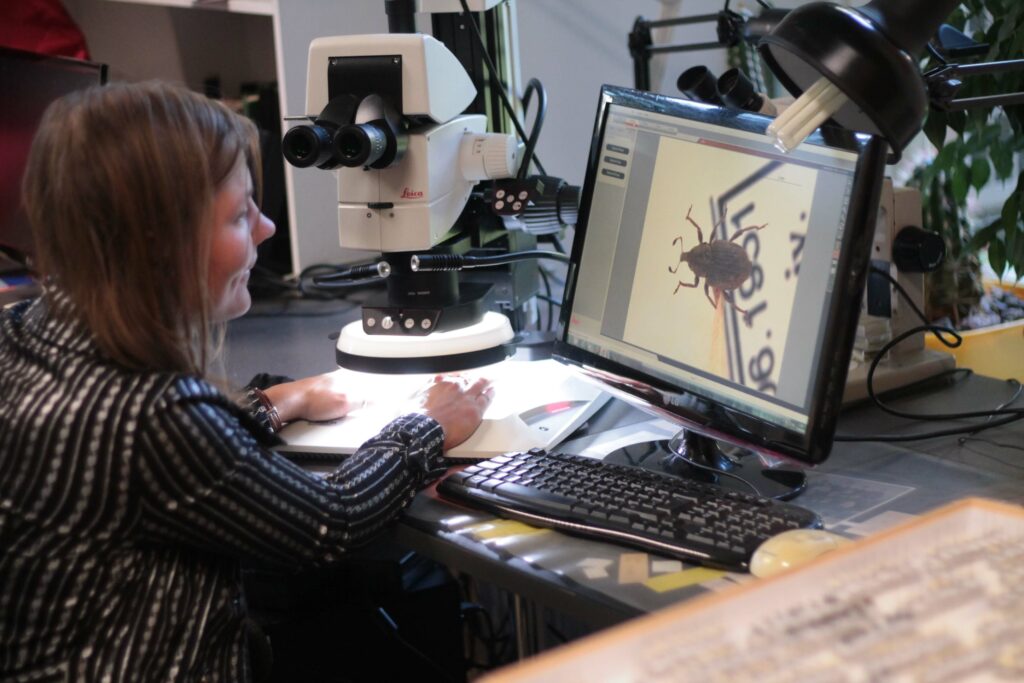
Equipment at the RI
Disk array
A disk storage system for digital archives.
A scanner with workstation.
An automatic scanner for herbal and entomological collections.
A cabinet storage system.
System of cabinets and drawers on rails for storing collections and archives.
Contact
Hosting organisation: University of Tartu
https://natarc.ut.ee/en/teenused.php
Vanemuise 46 / 51014 Tartu
Urmas Kõljalg, urmas.koljalg@ut.ee
Estonian Environmental Observatory (Kkobs)
RI description
The Estonian Environmental Observatory is an integrated network of experimental environment stations which involves Estonian RIs. It covers atmospheric, climate and Earth studies, biodiversity, and marine environmental studies. The experimental research station network comprises a system of field laboratories and automatic stations representing different geographical and climatic areas in Estonia.
A series of different field and research stations are used for environmental studies by Estonian universities and environmental authorities. These stations, which have been improved and equipped with modern facilities, are located on lines of an environmental variability gradient from coastal areas towards inland areas. This network is supported by marine and lake study platforms. The important parts of the observatory are the station for measuring ecosystem-atmosphere relationships (SMEAR) with a 130 metre-high antenna in Järvselja, and the related FAHM experimental system in Rõka with its integrated atmosphere watch system (GAW, Tõravere).
Experimental field experiments have been carried out to study plant biodiversity in the Puhtu-Laelatu complex station, supporting the long-time monitoring data lines. Marine studies are supported by the field laboratory in Kõiguste and by automatic station on Keri Island, while lake studies are based at Võrtsjärv Limnological Station. Experimental stations will be supported by a new geomatics and geoinformatics laboratory which will develop the methodology for data collection, processing, and visualisation, and which will serve study groups and society in general with geoinformation analysis, offering support with applied planning tasks.

RI research services
Sample preparation and handling: the preservation of taxonomic collections, plus a processing and analysing service.
Boats and marine equipment: equipment for measuring the bio production characteristics of seas and lakes, plus currents, and temperature and visibility changes.
Experimental field laboratories and equipment: field laboratories for various biological experiments and measuring.
GHG measurements: CO2, CH4, and H2O gas measurements via the SMEAR station.
Remote sensing: using radar and LIDAR, scanning the landscape and coastal areas.
Physical oceanography: measuring the temperature, salinity, density, and circulation of heat and organic matter.
Meteorological measurements: basic and complex temperature, wind, humidity, air pressure, water vapour readings, plus those for several gradients.
Atmosphere-biosphere gas measurements: measuring biosphere-atmosphere exchanges in biologically-related gases using micrometeorological methods.
Photosynthesis measurements: measuring gas exchange and CO2 assimilation in stems (via the FAHM station).
Equipment at the RI
Nanometre aerosol and an Air Ion Spectrometer for the measurement of cluster ion and nanometre aerosol size distributions.
Radon monitor, and a Geiger-Müller gamma-radiation detector.
An aethalometer.
Field data loggers.
A data logger.
Laboratory LED lightening system.
LED lightening for supporting FAHM experiments.
Surface and ground water indicators.
Groundwater and surface water monitoring instrumentation.
An ultrasonic anemometer.
Eddy covariance systems (portable and stationary).
Eddy covariance technique stations to measure and calculate vertical turbulent fluxes within atmospheric boundary layers.
A multiplexer device and shoot chambers.
GIS stations.
A terrestrial laser scanner.
A laser tachometer.
A digital gravimeter.
Contact
Hosting organisation: University of Tartu
http://kkobs.ut.ee/services.html
Vanemuise 46 / 51014 Tartu
kkobs@ut.ee
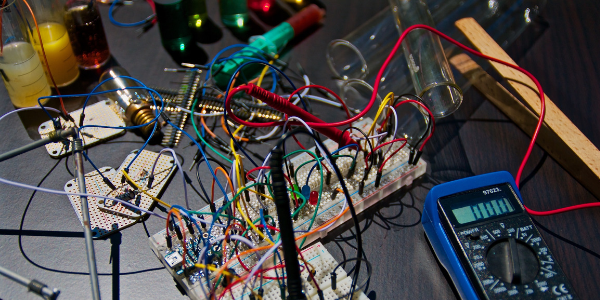
Estonian Scientific Computing Infrastructure (ETAIS)
RI description
The Estonian Scientific Computing Infrastructure (ETAIS) was established in 2011 to increase the competitiveness of Estonian R&D in computing and data-intensive fields by providing a modern computing infrastructure. The common infrastructure for compute clusters, storage, and support allows researchers to collaborate together in projects on a local level as well as on an international level. ETAIS is the distributed infrastructure managed by a consortium of four national organisations: the University of Tartu, Tallinn University of Technology, the National Institute of Chemical Biology and Physics, the Information Technology Foundation for Education (formerly the Estonian Education and Research Network (EENet)).
RI research services
Computing resource
Access to computing resources through a queuing system; the installation of scientific software; support for preparing and submitting computing jobs.
Storage resource
Rapid access to data: support in terms of data management.
Equipment at the RI
Computing and storage resources: University of Tartu, a cluster with 135 nodes and a total of 2,900 processor cores, 18Tb total memory. Storage capacity is 3Pb of disk space and up to 30Pb of tape storage.
Tallinn University of Technology: a cluster with 232 nodes, a total of 2,784 processor cores, 11Tb of total memory. Storage capacity is 200Tb.
National Institute of Chemical Biology and Physics: a cluster with 128 nodes, a total 4,096 processor cores, 8,192Gb of memory. Storage capacity is 3Pb.
Contact
Hosting organisation: University of Tartu
http://www.etais.ee
High Performance Computing Centre, University of Tartu, Lossi 3-118, Tartu.
High Performance Computing Centre, Tallinn University of Technology, Akadeemia tee 3, Tallinn.
Laboratory of High Energy and Computational Physics, National Institute of Chemical Physics and Biophysics (NICPB), Akadeemia tee 23, Tallinn.
Information Technology Foundation for Education, Akadeemia tee 21/1, 12618 Tallinn.
ivar.koppel@ut.ee
Center Of Nanomaterials Technologies And Research (NAMUR+)

Author: Kristian Kruuser
RI description
NAMUR is a multidisciplinary, distributed material research infrastructure with the primary goals of:
(1) providing a world-level research infrastructure for the fabrication, research and application of nanomaterials, and coordinating services based on infrastructures owned by project partners to a common goal of nanomaterials research and nanosafety;
(2) increasing Estonia visibility as a contact point on high level knowledge in the field of nano-scale materials;
(3) increasing knowledge and providing an educational platform for nanomaterials studies in Estonia and in the Baltic region.
NAMUR is an infrastructure excellence centre for nanomaterials research, technology development and safety assessment, bringing together high-technology equipment that already exists at the project partners and is being/will be upgraded in 2017–2021. Currently, the NAMUR infrastructure includes three modern setups, which are already in fully operational status, accompanied by variety of additional materials analysis methods. Access to the infrastructure is open for all organizations from all sectors, including private entrepreneurs of any country.
RI research services
HR-TEM facility provides the ability to characterize and visualize the material composition and structural defects at the sub-nanometer scale. The service is supported by a full-time machine operator, who can prepare samples for HR-TEM studies and help interpret the measurement results.
FIB-ToF-SIMS facility provides the service of characterizing the chemical composition of solids at a high level of lateral accuracy and mass selectivity. The service is supported by a full-time machine operator who is able to clean/prepare samples for SIMS studies and conduct the characterization of samples.
MAT-SEM facility provides a complex service of growing thin film materials with laser ablation device NANO-PLD-1000 and measuring the sample mass and structural properties with crystal resonance mass detector and high resolution (down to 0.6 nm) scanning electron microscope (HR-SEM). The service is supported by a full-time machine operator.
New services will be available during 2017 – 2021 upgrade.

Equipment at the RI
aHR-(S)TEM Titan 200 (FEI) – Analytical High Resolution Transmission Electron Microscope allows nanoscale imaging and element analysis of specially prepared solid samples at sub-nanometre resolution.
FIB-ToF-SIMS nanoTOF II (Focused Ion beam – Time of Flight – Secondary Ion Spectrometer) is used for measuring chemical element composition both at high lateral accuracy (0.5 – 1.0 microns) and mass selectivity (M/dM>11000). The setup also includes an ion gun for accurate materials cutting and in situ ion etching for depth profiling.
A High Resolution Scanning Electron Microscope (HR-SEM, Zeiss MERLIN) enables high resolution imaging of solid objects and materials down to nanometre resolution. Equipped with EDS, EsB, AsB, EBSD, EBIC.
ALD (Atomic Layer Depositon) system for solar cell materials (Picosun R-200, in operation from autumn 2018);
Nanomechanical tester and visualizer (in operation from 2019);
Complex of photo- and electron lithography (in operation from 2020);
Complexes of in vitro (nano)toxicology, ecotoxicology and nano-bio interactions (in operation from 2019).
Contact
Hosting organisation: University of Tartu / Tallinn University of Technology
https://sisu.ut.ee/namurplus
University of Tartu, Institute of Physics, W. Ostwald Str. 1 , Tartu (HR-TEM);
University of Tartu, Institute of Chemistry, Ravila Str. 14a, Tartu (FIB-ToF-SIMS);
Tallinn University of Technology, Institute of Material Sceince, Ehitajate tee 5, Tallinn (MAT-SEM complex).
National Institute of Chemical Physics and Biophysics, Akadeemia tee 23, Tallinn
Vambola Kisand, vambola.kisand@ut.ee

CLARIN ERIC (Common Language Resources And Technology Infrastructure)
Estonia joined CLARIN ERIC in 2011. The Centre for Estonian Language Resources, a consortium of three partners (the University of Tartu, Tallinn University of Technology, and the Institute of Estonian Language) implements CLARIN ERIC activities in Estonia.
Contact: Kadri Vider, MA
Executive Manager, Centre for Estonian Language Resources
The Institute of Computer Science, University of Tartu
Phone: +372 737 6433
email: kadri.vider@ut.ee

BBMRI ERIC (Biobanking And Biomolecular Resources Research Infrastructure)
Estonia joined BBMRI ERIC in 2013. The national body which implements BBMRI ERIC activities in Estonia is the Estonian Genome Centre, at the University of Tartu.
Contact: Professor Andres Metspalu
Director, Estonian Genome Centre, University of Tartu
Phone: +372 737 5936
email: andres.metspalu@ut.ee
https://genomics.ut.ee/en/content/estonian-biobank
ELIXIR (A Distributed Infrastructure For Life Science Information)
Estonia joined ELIXIR in 2013. The ELIXIR-EE node is coordinated by the University of Tartu with consortium partners (Tallinn University of Technology, Tallinn University, and the National Institute of Chemical Physics and Biophysics). The main contributions by Estonia are in the area of bioinformatics tools and training.
Contact: Professor Jaak Vilo
Head of Node, ELIXIR-Estonia
Institute of Computer Science, University of Tartu
Phone: +372 504 9365
email: jaak.vilo@ut.ee
Dr Hedi Peterson
Deputy Head of Node, ELIXIR-Estonia
Institute of Computer Science, University of Tartu
email: hedi.peterson@ut.ee
https://elixir.ut.ee/
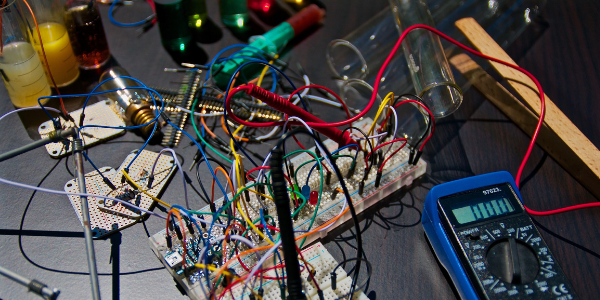
ERIC European Spallation Source
Estonia joined the European Spallation Source, ERIC, in 2015. The scientific activities which are generated by Estonian participation in the construction of the European Spallation Source are coordinated by the University of Tartu together with its consortium partners (Tallinn University of Technology and the National Institute of Chemical Physics and Biophysics). To better involve Estonian companies in the construction of the spallation source, an industrial liaison officer is employed by the University of Tartu.
Contact: Professor Enn Lust
Director, Institute of Chemistry, University of Tartu
Phone: +372 737 5261
email: enn.lust@ut.ee
Ott Rebane
Industrial Liaison Officer, Institute of Physics, University of Tartu
Phone: +372 737 6607
email: ott.rebane@ut.ee







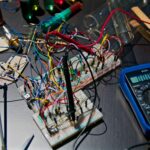
ESS ERIC (European Social Survey)
The European Social Survey (ESS) is an academically-driven cross-national survey that has been conducted across Europe since its establishment in 2001. Every two years, face-to-face interviews are conducted with cross-sectional samples. Estonia became a member of the ESS family in 2004.
The survey measures the attitudes, beliefs, and behaviour patterns of diverse populations in more than thirty nations. The main aims of the ESS are as follows:
The ESS database with its large number of metadata files is available free of charge for non-commercial use and can be downloaded from this website after a short registration process. The ESS website also allows the online analyses of data. In 2005 the ESS was the winner of the Descartes Prize for Research & Science Communication. In 2013 the ESS was awarded European Research Infrastructure Consortium (ERIC) status, and in 2015 the ESS in Estonia was elected the best science educator project in Estonia.
The ESS has a large and growing number of users. It stands out as a source of valuable resource, especially due to its high quality standards, its simple and open access, and the increased capacity for international comparison, from which many academic and non-academic users benefit immensely. The high quality standards, country coverage, and increasing longevity have contributed to impressive levels of academic impact. For academic purposes, the ESS is rated at gold standard for services of this type.
The ESS is also notable as a teaching resource, one that has been used in many non-academic domains. ESS data is a powerful tool when it comes to demonstrating particular problems in a given country, and can be a useful resource for indicator construction and policy monitoring.
See more about the ESS:
Impact study: europeansocialsurvey.org/docs/findings/ESS-Impact-study-Final-report.pdf
ESS website: https://uhiskond.ut.ee/et/sisu/euroopa-sotsiaaluuring
Contact: Dr Mare Ainsaar
Senior Researcher, ESS Coordinator in Estonia
Institute of Social Studies, University of Tartu
Phone: +372 737 5936
email: mare.ainsaar@ut.ee
hthttps://uhiskond.ut.ee/et/sisu/euroopa-sotsiaaluuring